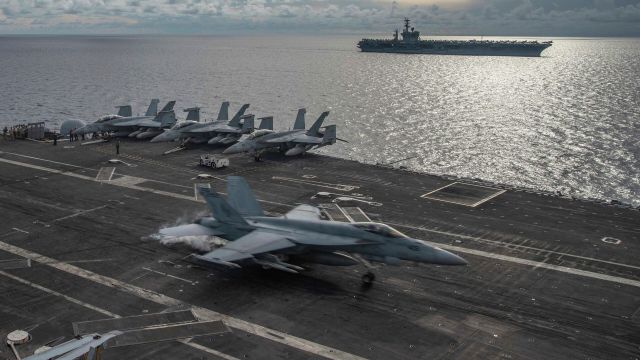MOSCOW, Apr 24 — RIA Novosti, Andrey Kotz. The US has presented plans for the development of the Navy. The goal is to ensure superiority over rivals. First of all, Russia and China, which recently conducted maneuvers. However, the ambitious plan has already run into problems.
Choose one
The published document considers the renewal of the ship's composition until 2052. His first version was criticized on Capitol Hill last year.
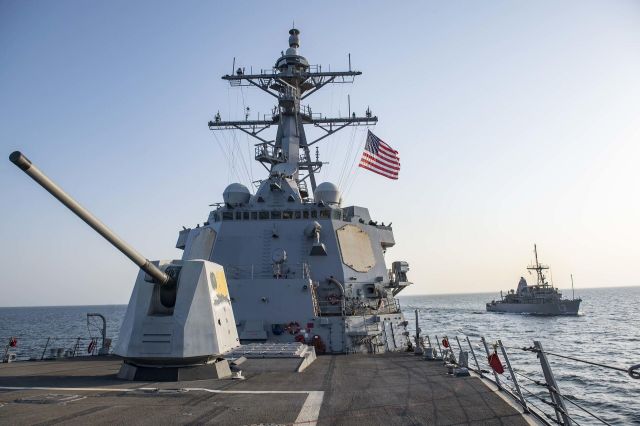
US Navy destroyer USS Forrest Sherman (DDG 98) Image source: CC BY 2.0 / U.S. Navy photo by Mass Communication Specialist 2nd Class Raymond Maddocks / USS Forrest Sherman (DDG 98), left, and USS Dextrous (MCM 13) transit the Arabian Sea
In particular, a member of the Senate Armed Services Committee, Roger Vicker, doubted that the industry would pull the order in 30 years. The concept has been finalized.
Three ways of further development of the fleet are being considered. According to the first, the Pentagon is going now. This scenario provides for the replacement of the Arleigh Burke Flight III destroyers with promising DDG(X), but only from 2032. And before that, it is planned to bring the new platform to mind, master the operation of all components and assemblies so that serial ships do not have breakdowns.
They should also build promising Constellation-class missile frigates from 2026 on one or two pennants a year.
As for the underwater forces, then they refused to rush. The transition from Virginia-class multipurpose submarines to promising SSNs(X) was shifted from the late 2020s to the mid-2030s. For financial reasons.
No restrictions
The second option is simultaneous purchases of Virginia and SSN(X) multipurpose submarines, which will gradually replace the most aged nuclear—powered vessels. Instead of destroyers, the bet is on marine unmanned platforms.
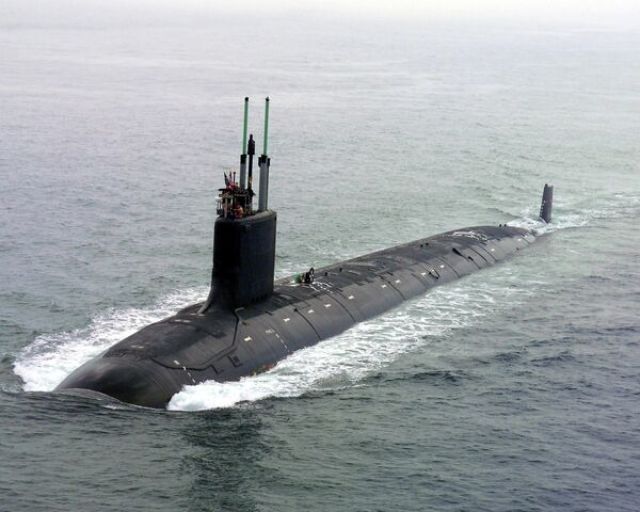
American submarine of the "Virginia" type Image source: © Public domain/U.S. Navy photo by General Dynamics Electric Boat
The authors admit: the first two options are unlikely to allow you to get 355 pennants in 30 years.
Today, the US Navy has about 300 ships and submarines. Several factors hinder the expansion. Firstly, the budget, which is constantly being debated in the Senate. Secondly, there is a shortage of production capacity. As a third option, the authors of the document propose to forget about these circumstances.
If you invest all your resources, forgetting about the limitations, then, according to the concept, the target will be achieved by 2042. Under this scenario, the Navy will buy aircraft carriers every four years. And promising SSN (X) submarines and DDG(X) destroyers — two units each year.
By the way, Beijing, Washington's main geopolitical rival, has also outlined a complete renewal of the fleet for the 2040s, as well as the Armed Forces as a whole. China is a leading maritime power that has already demonstrated to the world the ability to build ships of any rank. It is possible that China will displace the United States on the throne of the "king of the oceans".
Problems with industry
The Americans are not launching new ships yet, but they are writing off "pensioners". We started with two Independence—class coastal warships - USS Jackson (LCS-6) and USS Montgomery (LCS-8). They will be decommissioned in 2024.
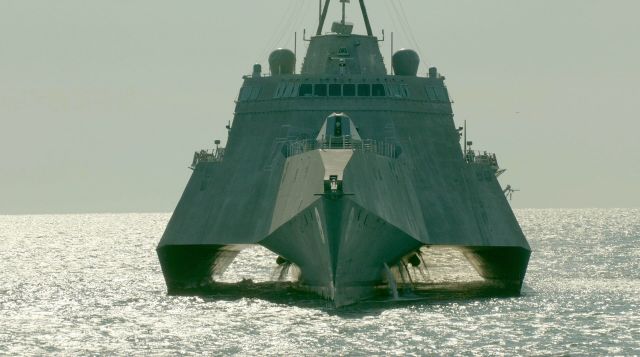
US Navy Coastal Zone Ship LCS-6 Montgomery ("Montgomery") Image source: © Flickr / Austal USA
Next year, a farewell to the aging cruiser fleet is planned — the Ticonderoga-class ships, namely USS Antietam (CG-54), USS Leyte Gulf (CG-55) and USS Shiloh (CG-67).
In total, 13 pennants will be written off in 2024, the same number in 2025, 14 in 2027 and 13 in 2027.
Of course, they will be replaced. That's just the plan does not specify on which production base. Last year, the head of the US Fleet Forces Command, Admiral Daryl Codle, said that the shipbuilding capacity in the country is not enough to repair existing equipment, not to mention the construction of a new one.
From 2015 to 2019, the US Navy spent $2.8 billion on the reconstruction of shipyards. We expected to increase their productivity and efficiency. But, according to a government report, 75 percent of maintenance work on aircraft carriers and submarines has not been completed on time at four state-owned enterprises over the years. The situation is better in private companies, but they are mainly engaged in small and medium-tonnage ships.
The shipyards are very old. For example, Boston is more than 200 years old. Of course, the equipment has been changed there more than once, but the infrastructure no longer meets modern requirements. Admiral Codl called for increased funding for naval shipyards in Portsmouth, Puget Sound and Pearl Harbor.
In need of repair
The technical condition of the American fleet has long left much to be desired. Back in the fall of 2020, the special commission reported to Congress about numerous problems with surface ships. Over the past decades, their combat capability has fallen.
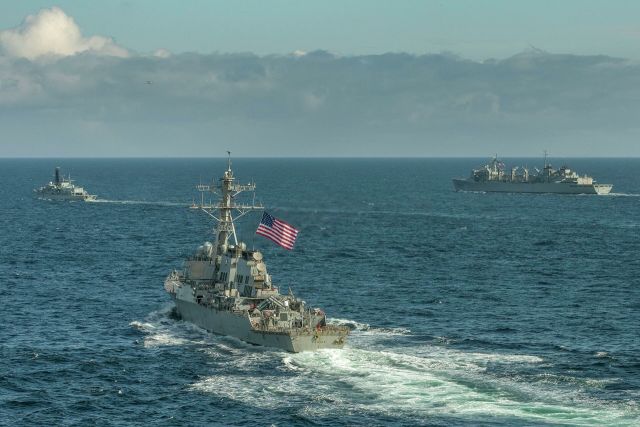
The US Navy destroyer "Porter", the USNS Supply support ship and the British frigate "Kent" during exercises in the Barents Sea. May 5, 2020 Image source: © Photo : LPhot Dan Rosenbaum, HMS Kent
Most of all, there are questions about power plants: they regularly fail, and crews have to deal with repairs — right at sea. On more than 30 ships, engine efficiency has decreased by 20 percent in five years.
Unreliability and capriciousness, in fact, put an end to the newest high-speed pennants of the Freedom class, which broke down every now and then during campaigns. The defect was recognized as systemic, and since 2021 these ships have not been bought.
There is enough headache with the Aegis combat information and control system, which, among other things, is responsible for air defense. It is equipped with the destroyers "Arly Burke" and the missile cruisers "Ticonderoga". However, the program crashes regularly. According to the commission's conclusion, if the ideal condition of the equipment is equal to one, then the average Aegis combat readiness does not exceed 0.75.
A separate story is the devices for taking off and landing shipboard helicopters. Their serviceability decreased from 0.77 to 0.68, and breakdowns could lead to tragedy more than once. So, in October 2019, the MH-60 Seahawk helicopter crashed while landing on the aircraft carrier Ronald Reagan. Fortunately, there were no casualties. The cause of the accident is an error in the ship's electrical system, which gave the pilot incorrect data for descent.
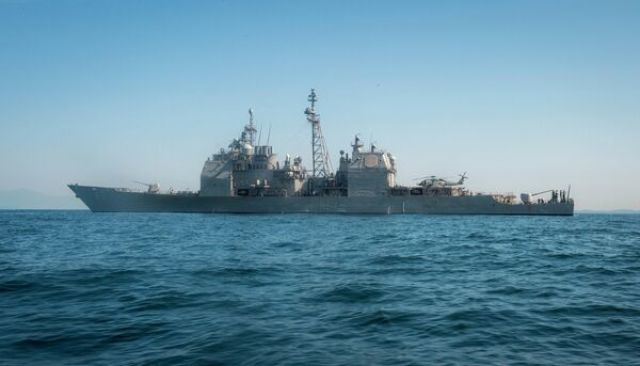
The American cruiser Chancellorsville Image source: © U.S. Navy photo by Mass Communication Specialist 3rd Class Sarah Myers
Moreover, the costs of fleet maintenance are only growing. But this, according to the military, is not enough. If the problem is not dealt with comprehensively, including by updating the infrastructure, the American fleet will soon lose its combat capability.
